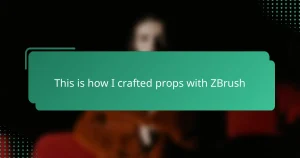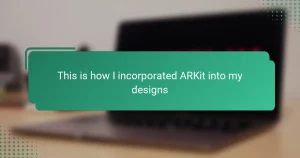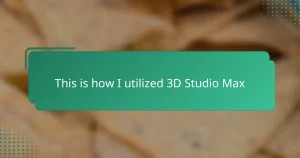Key takeaways
- Science fiction props are more than gadgets; they convey the technology and culture of imagined worlds and enhance storytelling.
- Using tools like Push/Pull and Offset in SketchUp can significantly streamline the design process, transforming concepts into dynamic 3D models.
- Effective planning and research on real-world technology can inform your prop design, ensuring it feels believable and functional.
- Detailing and texturing in SketchUp add depth and authenticity to designs, making them relatable and lifelike.

Understanding science fiction props basics
Science fiction props often blur the line between reality and imagination, serving as physical embodiments of futuristic concepts. When I first started exploring these props, I realized they’re more than just cool gadgets—they’re storytellers that hint at the technology and culture of an imagined world. Have you ever wondered what makes a prop feel authentic rather than just a shiny plastic object?
From my experience, the key lies in understanding the basics: materials, design language, and functionality. Many science fiction props draw inspiration from real-world technology but exaggerate or innovate to create something that feels both familiar and otherworldly. This balance is crucial—it’s what allows viewers to connect emotionally while being transported to a completely new environment.
What’s fascinating is how a prop’s design can influence the mood of a scene or character. Early on, I noticed how subtle details—a worn control panel or an alien script—added layers of depth that sparked curiosity and wonder. It made me realize that mastering these basics isn’t just about technical skill; it’s about capturing the essence of a universe through small, meaningful touches.
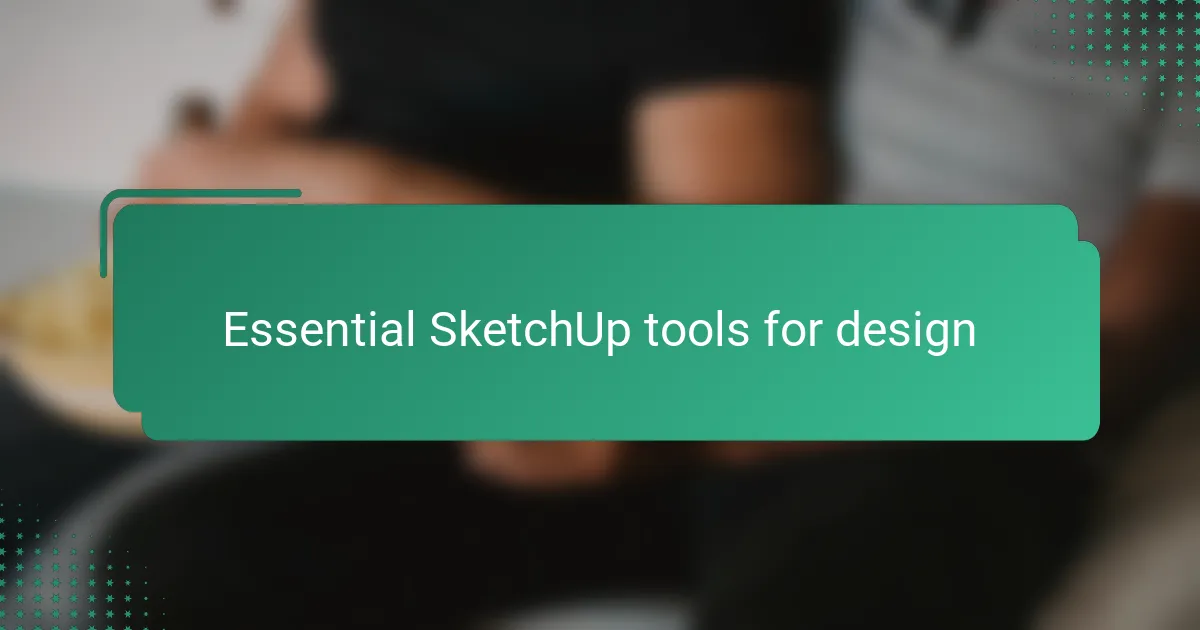
Essential SketchUp tools for design
When I first started using SketchUp for designing sci-fi props, the Push/Pull tool quickly became my go-to. It’s incredible how this simple tool lets you transform flat shapes into complex 3D forms with just a few clicks. Have you ever felt stuck trying to visualize a futuristic weapon or gadget? For me, Push/Pull unlocked the freedom to build those bold, dimensional ideas that only existed in my imagination.
Another tool that changed everything for me was the Offset tool. Creating detailed panel lines or layered surfaces felt so much more intuitive once I started using it. I remember working on a starship console and being amazed at how adding subtle depth variations gave the design a realistic, tactile feel. This tool made it easier to think like a prop builder, not just a digital modeler.
Lastly, I can’t overlook the Move and Rotate tools—they’re essential for positioning parts precisely and experimenting with different angles. When designing modular elements or futuristic armor pieces, these tools let me quickly test combinations until the whole prop felt visually balanced. Isn’t it rewarding when a design finally clicks into place and feels like it belongs in an actual sci-fi universe? For me, these are the core tools that bring imagination to life in SketchUp.

Planning your sci-fi prop project
Planning your sci-fi prop project always starts with a spark of an idea, but turning that spark into something tangible means setting clear goals. I remember times when I dived straight into modeling without a solid plan, only to feel lost halfway through. Have you ever jumped into a project and realized you didn’t really know what you wanted to build? Taking a moment to sketch out your concept—or even just jot down key features—will save you a lot of frustration later on.
Another crucial step I’ve learned is researching real-world technology and sci-fi influences before opening SketchUp. It’s amazing how looking at existing designs can fuel creativity and help ground your prop in a believable context. When I designed a futuristic helmet, flitting between concept art and engineering principles gave me a fresh perspective. Don’t underestimate the power of a well-planned reference library—it’s your creative compass.
Finally, consider how your prop will be used or displayed. Will it need to be lightweight but sturdy? Should it incorporate moving parts? Questions like these shape your approach, especially when translating digital models into physical objects. In my early projects, thinking through these practicalities upfront saved me endless headaches down the road. Have you thought about how your design choices will affect the building process or functionality? This kind of forward thinking turns a good idea into a project that truly works.
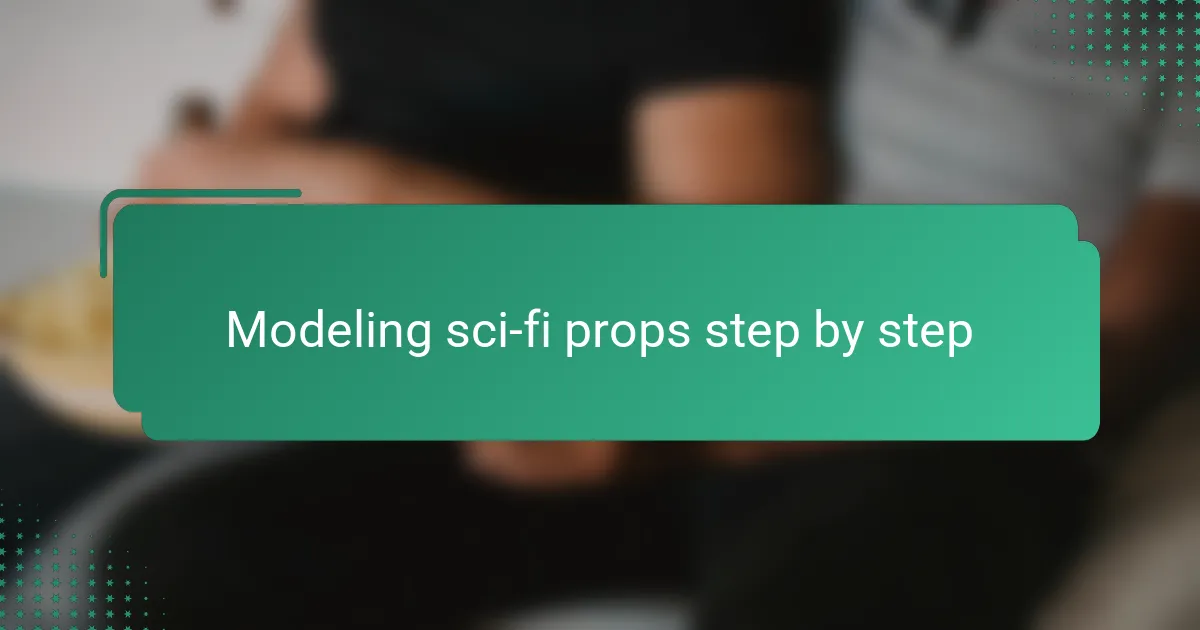
Modeling sci-fi props step by step
Starting a sci-fi prop in SketchUp always feels like stepping into an alternate universe for me. I begin by blocking out the basic shapes, almost like sketching in 3D—this rough framework is where the prop’s personality starts to emerge. Have you ever noticed how even simple forms can hint at something futuristic before any details are added?
Once the foundation is set, I dive into refining edges and adding intricate features. It’s amazing how adjusting a single panel or curve can completely change the vibe of a prop. I remember tweaking the contours on a laser rifle model until it struck just the right balance between sleek and functional—those moments make the hours spent feel incredibly rewarding.
The final step, for me, is layering in textures and small details like bolts or lights to bring the prop to life. These touches might seem minor, but they transform a flat model into a believable artifact from another world. Have you ever added that one extra detail and suddenly felt your creation had a story to tell? That’s when I know the model is ready to truly step onto the sci-fi stage.
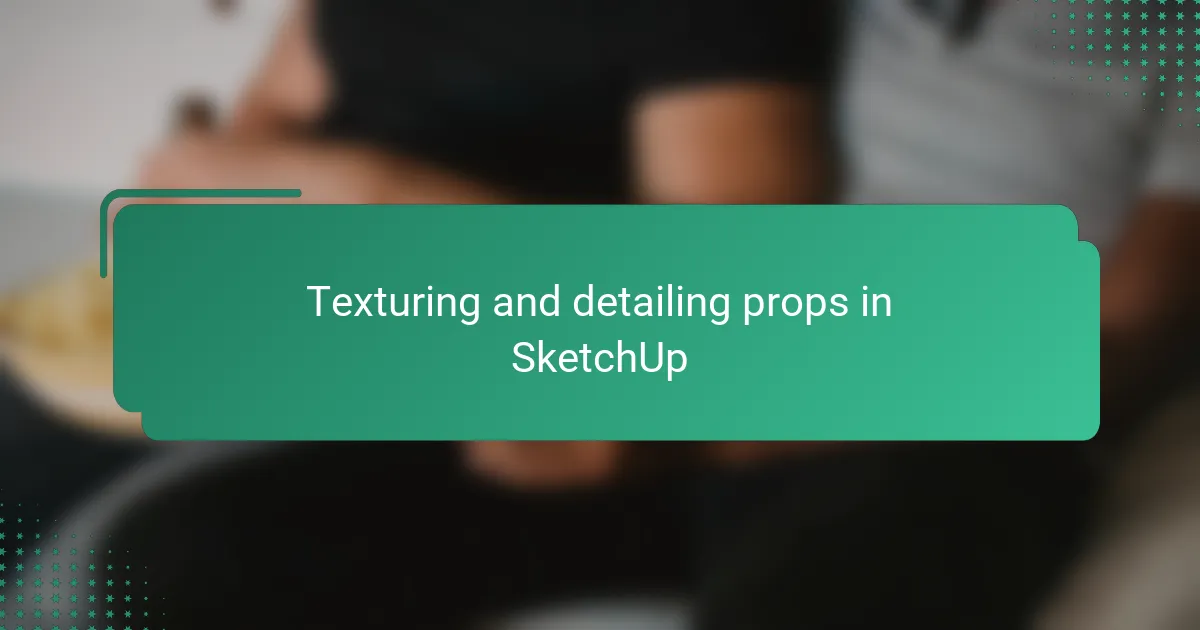
Texturing and detailing props in SketchUp
Texturing in SketchUp felt like discovering a new dimension of creativity for me. Applying materials wasn’t just about slapping on colors; it was about giving each surface a story—metal that looked battle-worn or alien alloys with subtle gradients. Have you ever noticed how the right texture can make a prop leap off the screen and feel tangible?
Detailing props pushed my patience and attention to nuance like nothing else. From tiny screws to futuristic circuit patterns, I found that even the smallest elements mattered a lot. I recall spending hours perfecting the intricate decals on a spacecraft dashboard, and that painstaking effort really paid off when the whole model came alive with authenticity.
One thing I quickly learned is that SketchUp’s material editor can be both a blessing and a challenge. Matching textures seamlessly across different parts took trial and error, but experimenting with opacity and layering effects was incredibly rewarding. Have you ever felt that thrill when a previously flat surface suddenly feels textured and real? That moment made all the detailing hours worthwhile.
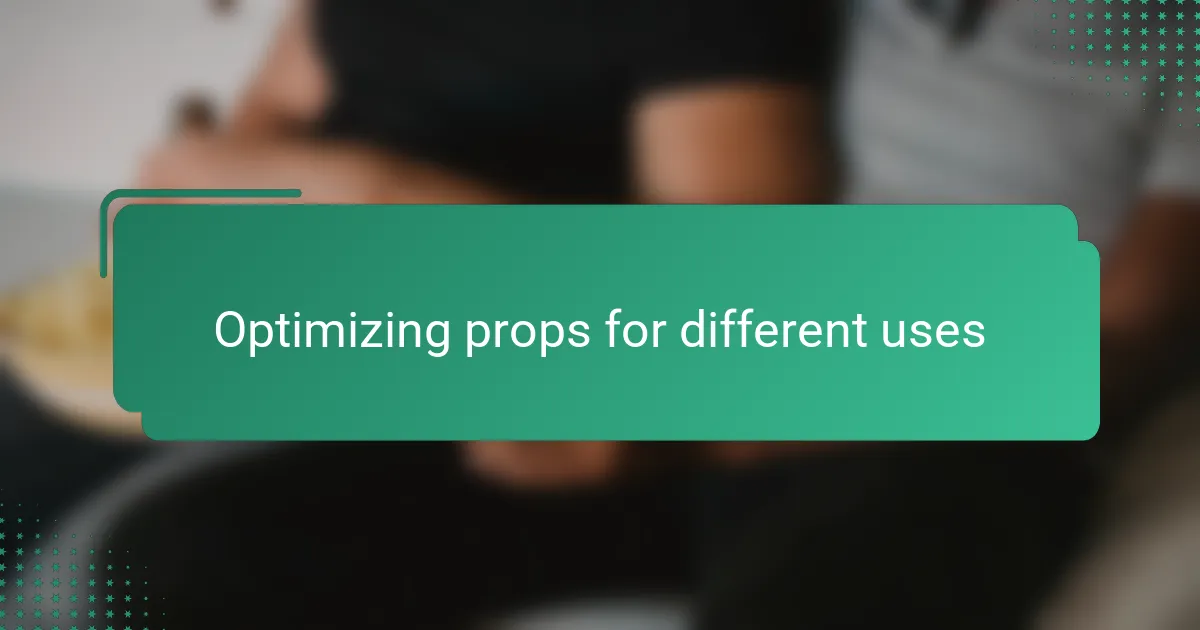
Optimizing props for different uses
Optimizing props for different uses means thinking beyond just how they look on screen. I found that when designing, it’s crucial to consider whether a prop will be handheld, worn, or used as a static display. For instance, a weapon meant for action scenes needs sturdiness and lightweight materials, while a control panel prop can afford more bulk since it stays put.
I remember working on a sci-fi helmet that had to fit an actor comfortably for hours under hot lights. This challenge pushed me to tweak the interior geometry repeatedly in SketchUp to balance realism with wearability. Have you ever had to rethink a design entirely because the original concept wasn’t practical? That’s when optimization really becomes a game-changer.
Another aspect I learned is modularity—designing parts that can be swapped or repurposed saves time and resources across productions. Breaking down complex props into interchangeable pieces not only made transport easier but also allowed me to adapt the same base model for different scenes. It’s amazing how a little planning upfront can multiply a prop’s usefulness later on.

Sharing and using your finished designs
Sharing your finished SketchUp designs always feels like opening a window into the world you’ve created. I often find it rewarding to upload my models to online communities or forums where other sci-fi enthusiasts can comment and even remix them. Have you ever felt that buzz when someone else takes your idea and adds their own twist? That kind of collaborative energy made me realize my designs were more than just files—they were building blocks for shared creativity.
Using your designs beyond the screen is another exciting chapter. Early on, I printed a miniature version of a prop and was amazed at how seeing it physically changed my perspective on scale and detail. Whether 3D printing, laser cutting, or simply exporting for digital use, SketchUp’s versatility lets your props step into the real world or virtual environments seamlessly. Have you considered how your design might evolve once it leaves the software?
At the same time, I’ve learned to keep my files organized and include clear notes about dimensions and materials. It might sound mundane, but trusting others (or even yourself weeks later) to interpret your model correctly depends heavily on good documentation. When I didn’t do this, I remember scrambling to clarify details before a deadline—definitely a lesson in sharing thoughtfully and professionally.
